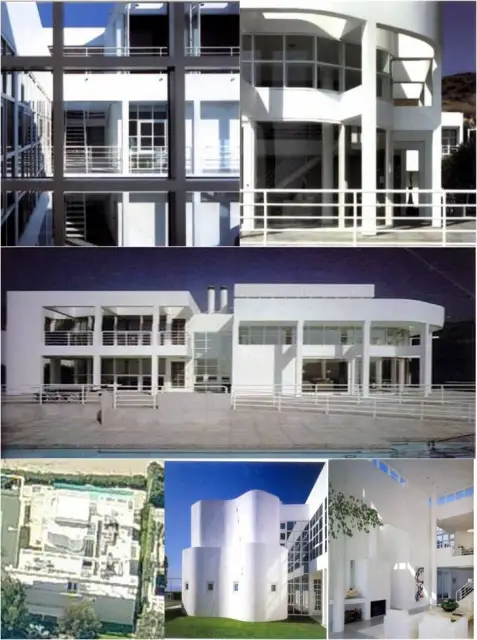
—
An Analysis
Ackerberg House
– Malibu, California
AR. RICHARD MEIER
—
Ackerberg House – An Introduction
A lavish white-colored beach house, full of sheer luxury…
A complete treat to eyes…
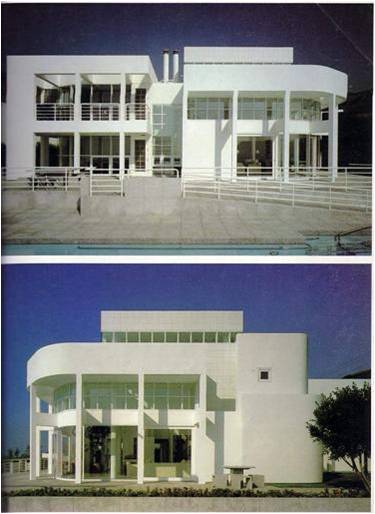
Location: Pacific Coast Highway, Malibu Beach, California, U.S.A.
Client: Norman And Leisette Ackerberg
Architect: Richard Meier
Completed: 1984 – 1986, Additions In 1994
A trendy house building in two separate blocks enclosing a courtyard, also accommodating a swimming pool and tennis court overlooking the sea…
Ackerberg House – About the Architect
Richard Mei
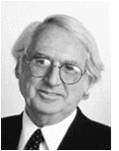
er was born in Newark, New Jersey in 1934.
He is also known as The Architect of Museums.
He graduated from The Cornell University in 1957 and later established his own practice in 1963.
In 1984, he was awarded the prestigious Pritzker Prize in Architecture.
He also designed the Getty Center in Los Angeles, California in the later year.
American Architect
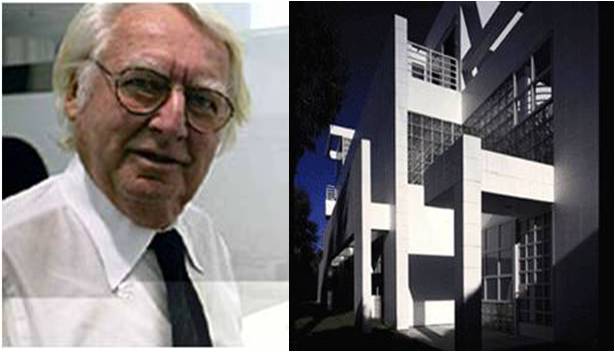
He is known for the extensive use of white-color enameled panels and glass.
Greatly inspired by the great French Architect Le Corbusier.
He maintained an extraordinarily concise architectural vocabulary, nearly all structures clad in white and transparent glass with nautical elements similar to a transatlantic liner.
The Richard Meier Design Philosophy includes 3 basic fundamentals : imparting the color, playing with light and exploiting the view. By compiling these three compherisively, AR Richard Meier uses simple geometries to create dynamic spaces which impart a phenomenal impact.
Ackerberg House – About the Client
Clients: Norman and Lisette Ackerberg
- Businessman and a Golf Player, an Elite Member of Society.
- The wife is a Prolific Piano Artist and hosts Stage Shows.
The clients were seeking to build something simple and uncontrived; something merging with the cultural and natural inspirations of the region yet unique…
Ackerberg House – The Location
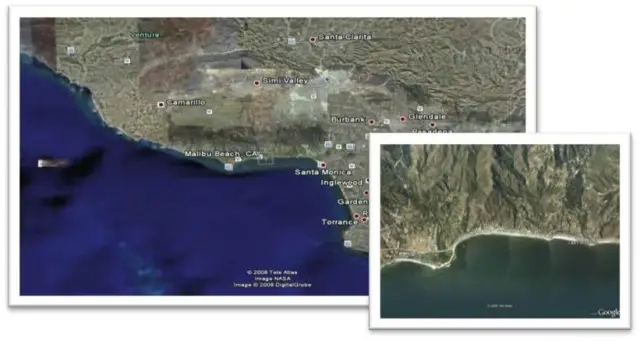


Ackerberg House – The Site
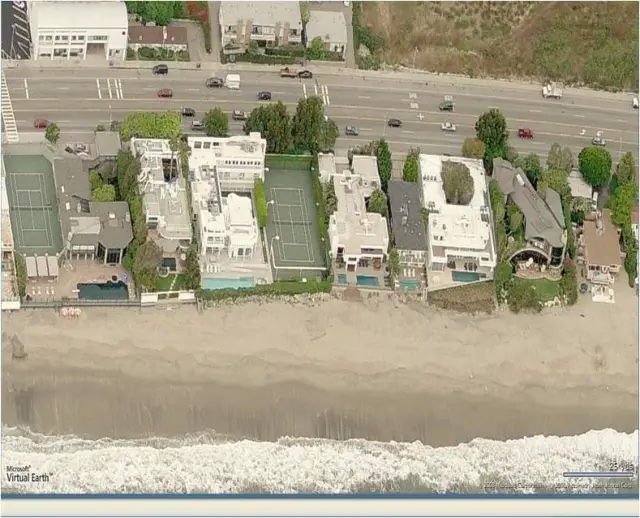
- Flat Site, Gentle Slope In The End
- Narrow plot with adjacent houses in close proximity on either side
- Wide range of mountains in the front (north) across the highway and the entire view of Pacific Ocean to exploit at the back (south)
- Elevation 14 M above sea level
- Strong sea breeze throughout the day ( 5 – 16 mph)
- Partially humid (avg. humidity 64%)
- Moderately cold climate (avg. summer daytime temp 18’c)
- Scarce precipitation mainly in the form of rain (21 inches)
- Summers sunrise 6:34 am local time
- Summers sunset 7:14 pm local time
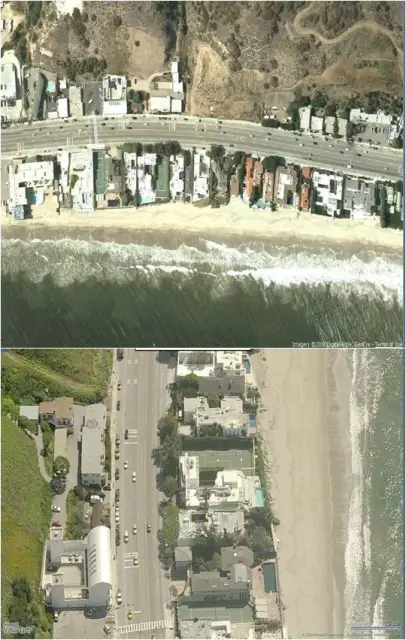
Ackerberg House – The Building Blocks
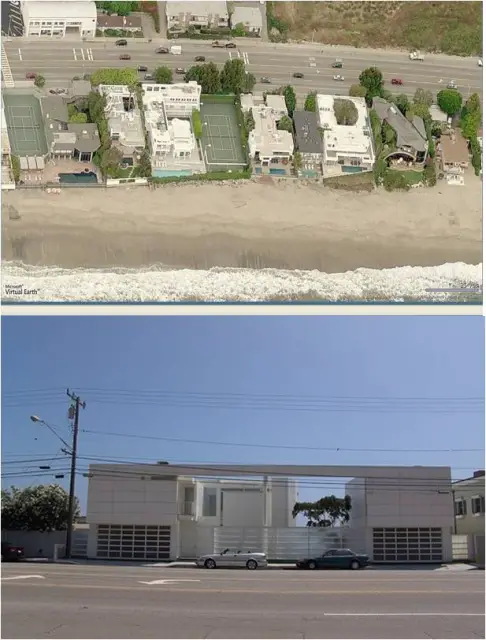
- The un-built site was a typical beachfront property, narrow and having adjacent houses very near to the plot boundary.
- The neighborhood had huge extravagant houses of little architectural value.
- The walls were built right up to the property line and squeezed between the fantastic ocean and the dismal Pacific coastal highway behind.
- Unlike typical Richard Meier houses, this house is not one neat volume
- The Ackerberg plot has been divided into two, with a tennis court taking up one half and a swimming pool stripped in between house and sea
- Guests and services form one enclosed block
- Living and dining forms another open structure
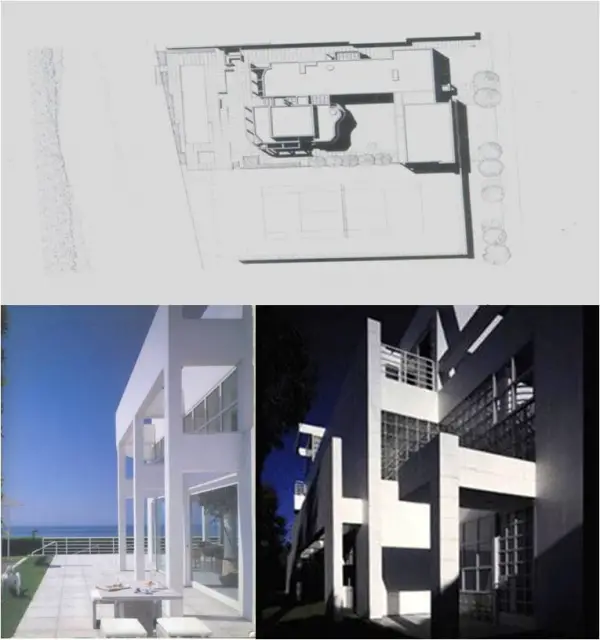
Ackerberg House – The Concept
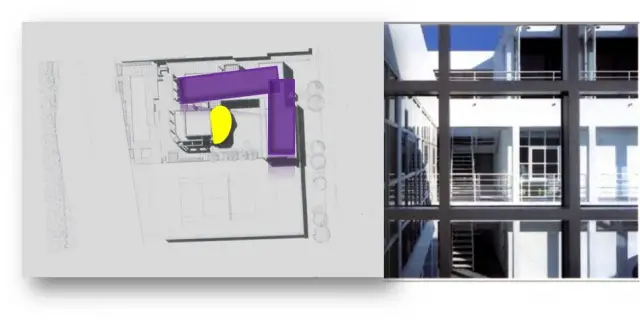
- Maximize the sea view and minimize the highway noise
The house is planned in two separate blocks :
- The guest and services is one L-shaped enclosed block clad in ceramic tiles or glass bricks, and
- a separate living and dining wing is a far more open structure with more glass and fewer tile. This block is a huge expanse of curved glass, allowing view in and out of the room
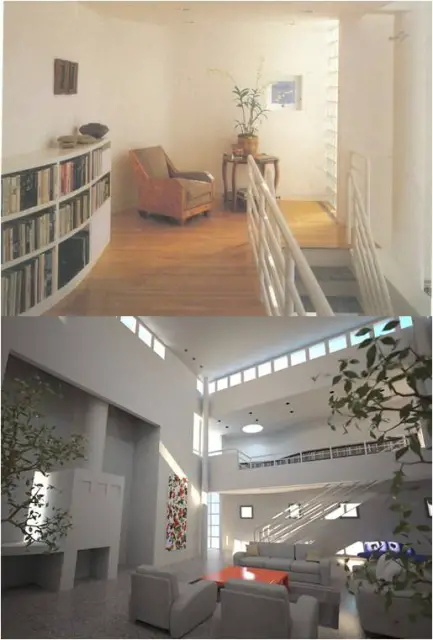
2. Differentiating public and private spaces
- The house has the bed rooms, the guest rooms, the servant quarters and the utility areas in one block which entirely composes the private area and the drawing, dining and informal seating in another block which is purely public and semipublic part of the house.
- Hence a clear attempt is made to separate the public and private areas of the house.
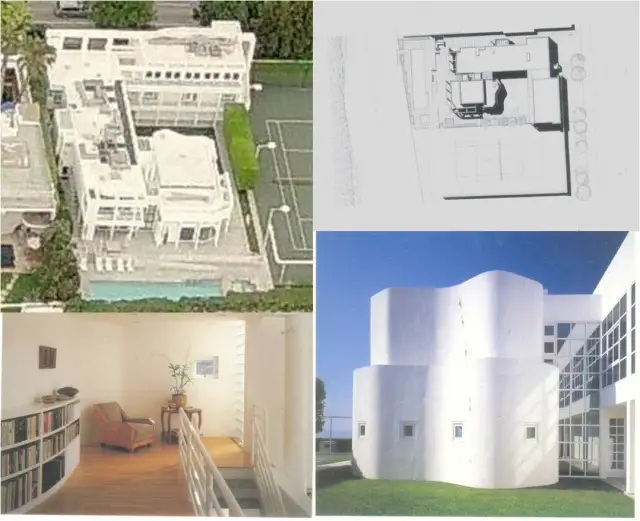
3. Double piano
- The owner of the house, Lisette Ackerberg is a professional piano player. The living room is eliberately shaped a piano for this connectivity. A piano is also placed in the study area.
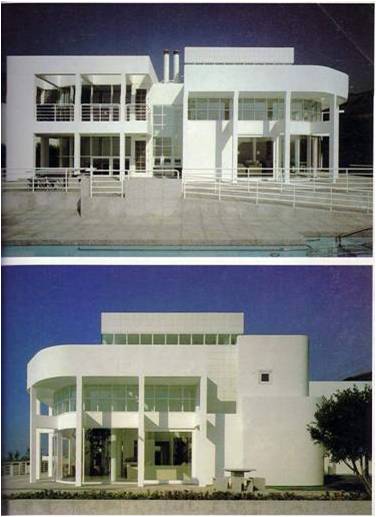
4. Nautical element
- The white railings of the Ackerberg House, so evocative of a transatlantic liner, provide a suitable theme for a seaside property.
- Most of the Richard Meier houses have his signature nautical elements – white railings, open huge double heighted floor to roof glass panels, which are often curved, and white circular chimneys.
- His architectural elements are also carefully borrowed from Le Corbusiers classics – Villa Savoye and Villa Stein, from which the architect is highly inspired.
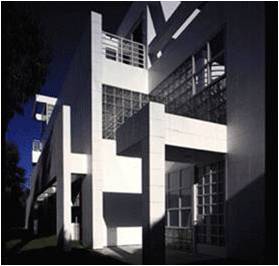
5. Climatically responsive building
Climate of California – Moderately Cold
- South side of the house is open, which allows south sun to enter in the day
- Warm sea breeze blowing in the night also enters the house from the southern double heighted windows
- Hence the houses need to be heated up only during winters
—
- The Ackerberg House is designed to mediate between the contextual extremities of high mountains and calm Pacific Ocean by creating a “C” plan. This plan accommodates an indigenous courtyard – a characteristic of South Californian houses.
- The courtyard enables cross ventilation in the living area, helping in bringing warm air in faster as compared to other houses in the neighborhood.
- The living room also has clerestory windows without corner mullions as a definitive step to invite the sun in during daytime
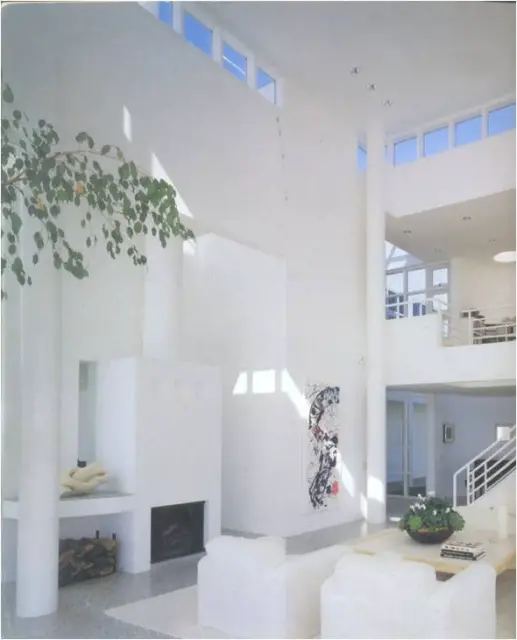
6. Indegenious play of lights
- The house, a classic example of South Californian modern architecture, has used horizontal and vertical plains to create a visual interplay of lights in the entire house. The street door opens in the courtyard, leaving the people to proceed in a loggia towards the real front door and living room beyond. The visitors pass through the relative peace of lushly turfed court to enter the living room, where they are hit by a climax of sea sound and light of the edge of the world’s biggest ocean. The impact is phenomenal.
- The South Eastern glass window panels and the glass brick wall at courtyard extends the living room to the courtyard and far beyond. The house visual sense is limited only by the horizon.
Ackerberg House – Ground Floor
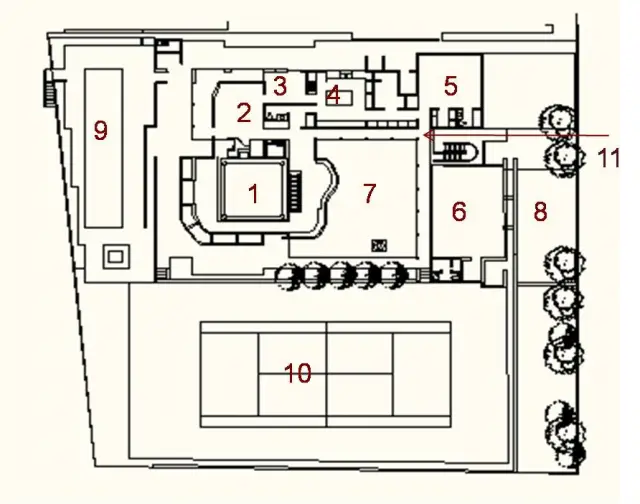
- Drawing Room
- Dining Hall
- Private Dining
- Kitchen
- Servant’s Room
- Garage
- Central Atrium
- Car Parking
- Swimming Pool
- Tennis Court
- Entrance
Ackerberg House – Upper Floor
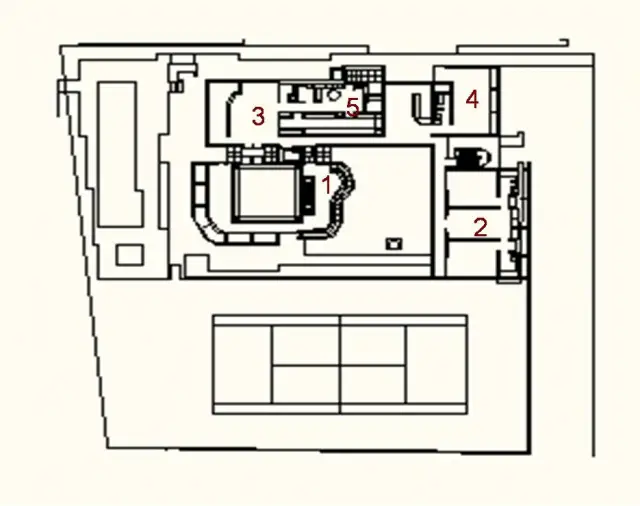
- Study
- Guest Rooms
- Bedroom
- Kid’s Room
- Bathroom
Ackerberg House – Circulation
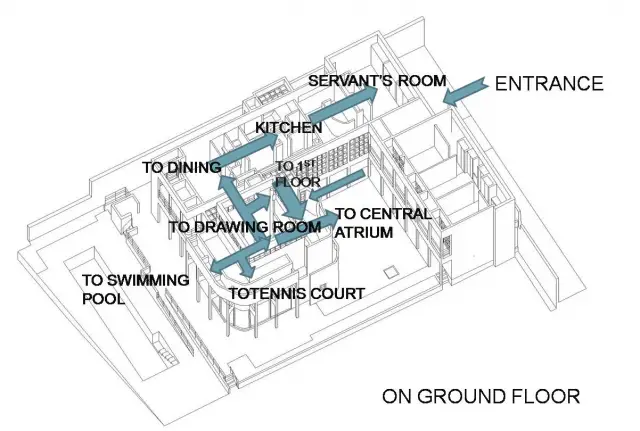
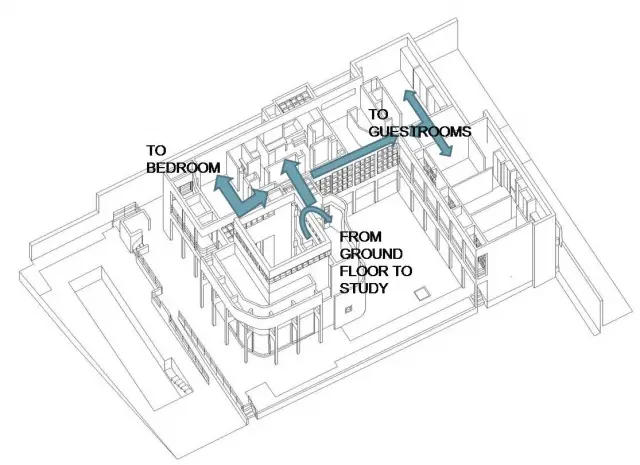
Ackerberg House – Inter Relationship of Spaces
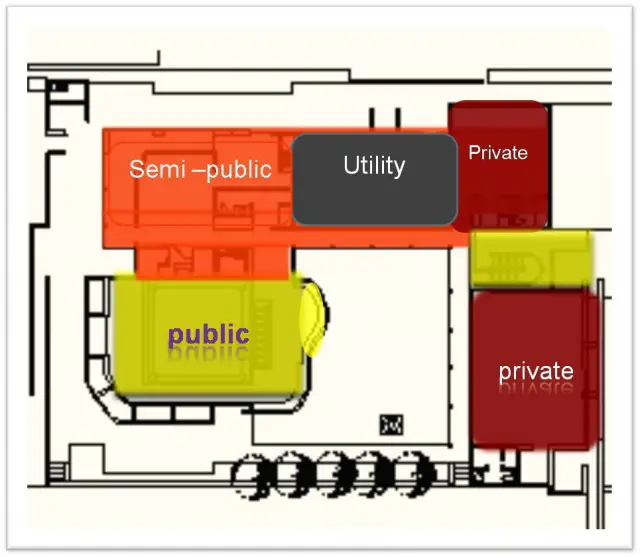
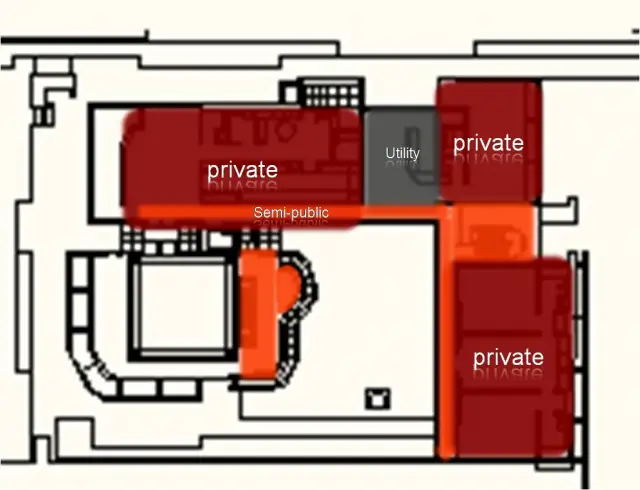
Ackerberg House – Form
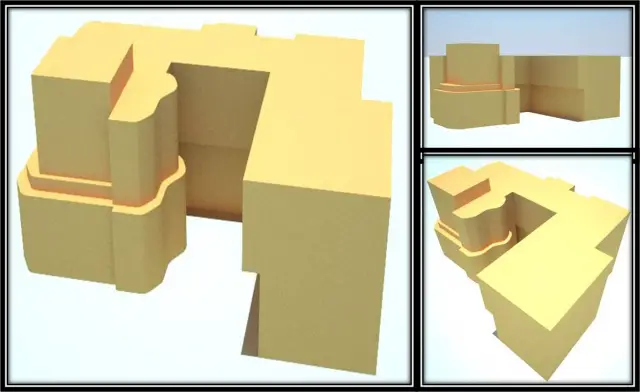
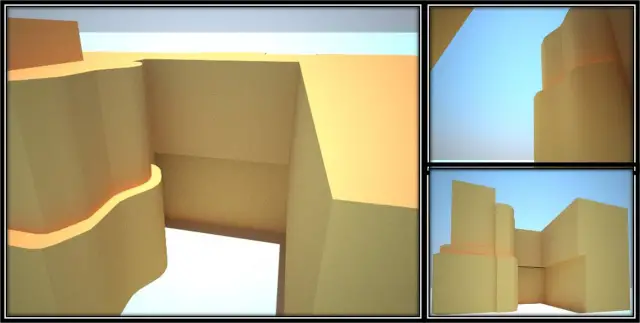
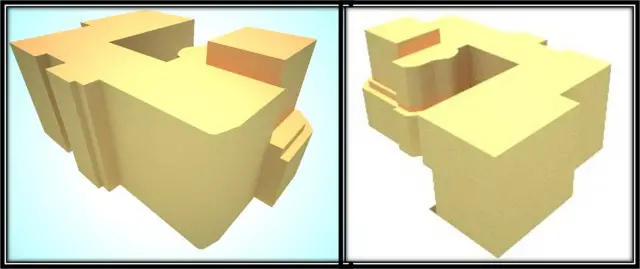
Ackerberg House – Volumes
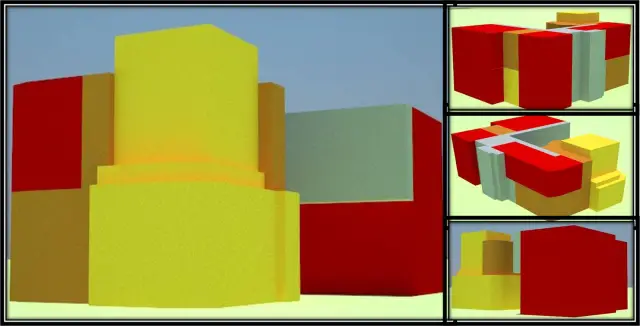
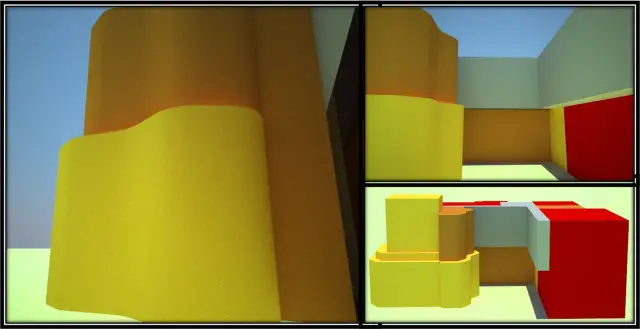
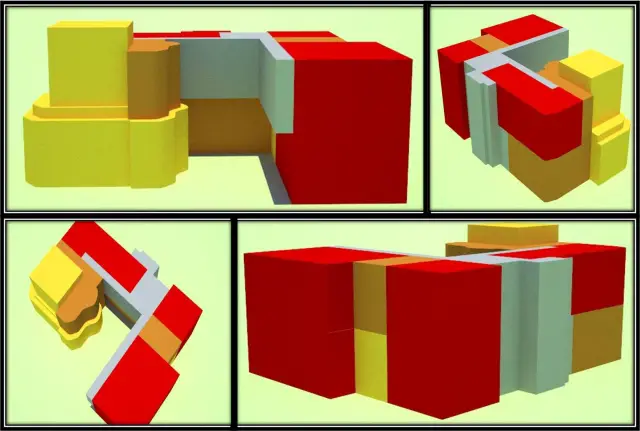
Ackerberg House – Visual Aspects

- Richard Meier is an international architect with an extraordinarily concise architectural vocabulary
- Nearly all of his structures clad in white and transparent glass.
- The architect has separated the house from the highway by making the front block completely enclosed. The front block is clad in white ceramic enamel tiles and glass bricks.
- The rear block is made to reach the ocean by creating huge voids, which are lined by transparent glass panels.
- The overall features used in the house give it an appearance of a modern transatlantic liner
Ackerberg House – The Conclusion
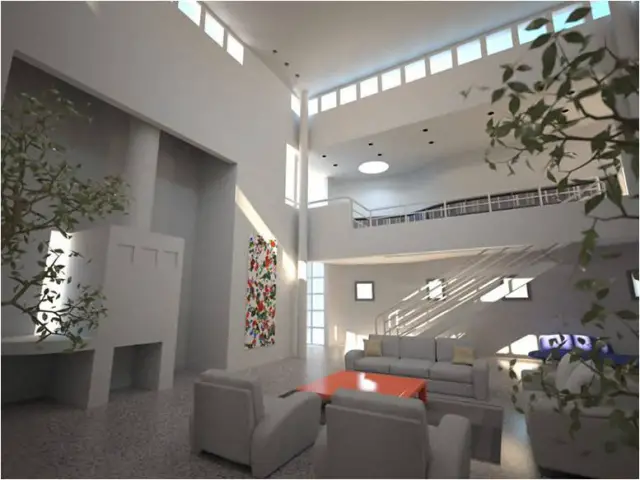
The Ackerberg House is Malibu. Its elements embrace the Californian lifestyle with no less certainty than the Houses of Neutra. There is a similar blurring between indoors and outdoors, with easy access from sitting room to pool, or an open air alternative to purely internal circulation.
The architect achieves successfully the synthesis of regional habits through the arrangement of his signature horizontal and vertical planes. Hence the very different form and materials of the Ackerberg House are unmistakably mere.
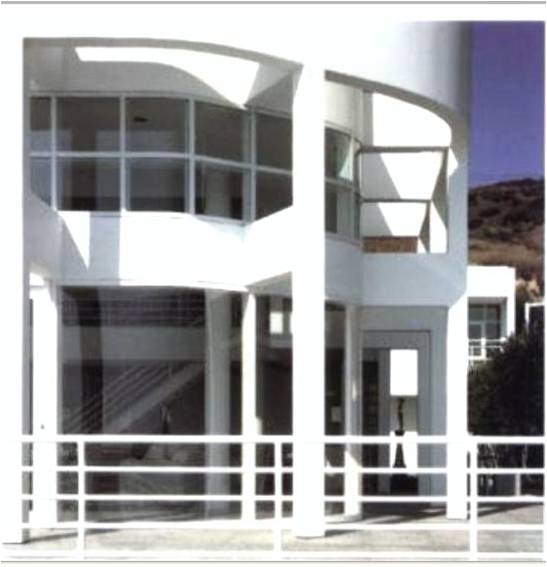

can anyone please tell me
can anyone please tell me more about his philosophy? I have to make a 1bhk house inspired by his philosophy and also I need to choose my site for the space also. can anyone help me please ?
The last photo in the
The last photo in the Building Blocks section is the street view of Meier’s Southern California Beach House, not the Ackerburg House, although they are fairly close to each other on this stretch of road, with the Malibu Beach House also being along this stretch. Also, many of Meier’s designs incorporate multiple buildings rather than one neat volume, contrary to the text for this section (as an example, both of the other Meier houses on this same strip of highway, mentioned above, feature 2 building designs).